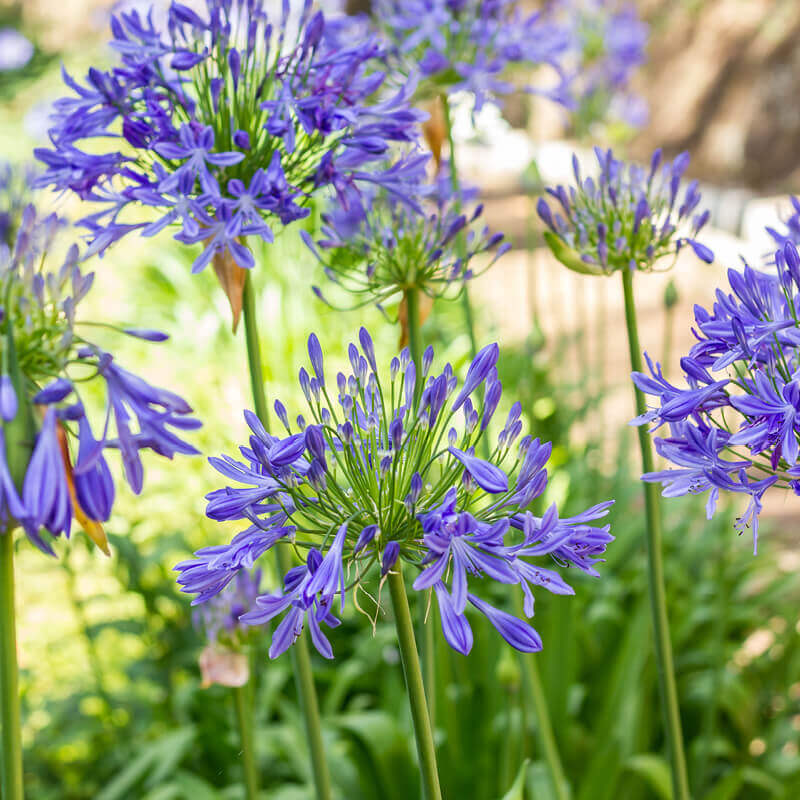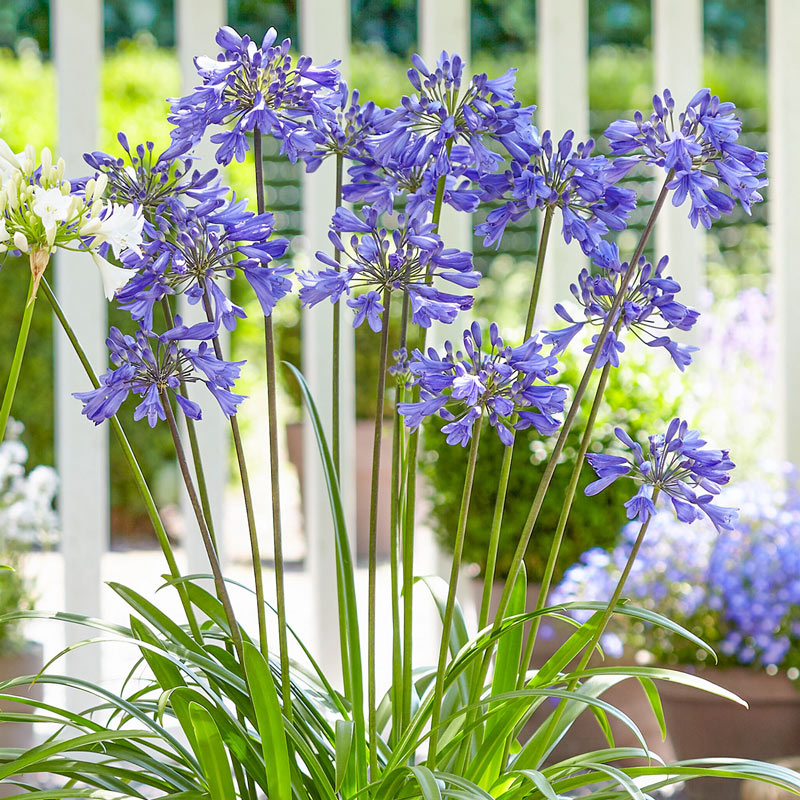Understanding the Art of Agapanthus Care: Essential Actions for Healthy And Balanced Growth and Vivid Blossoms
In the realm of horticulture, the growing of agapanthus stands as a gratifying undertaking for those that look for to nurture these elegant flowering plants. From picking the appropriate range to grasping trimming methods, the trip in the direction of cultivating thriving agapanthus plants is complex and holds the essential to unlocking the full capacity of these botanical gems.

Choosing the Right Agapanthus Selection

When selecting the best Agapanthus range for your yard, consider factors such as environment viability, blossom shade, and development routine. Agapanthus, generally called Lily of the Nile or African lily, comes in a variety of shades ranging from shades of purple and blue to white. Pick a flower color that matches your existing yard scheme to create an unified landscape. Furthermore, think about the environment in your area to make sure the Agapanthus variety you select can thrive in your details conditions. Some selections are much more forgiving of cold temperatures, while others favor warmer climates. Comprehending the growth behavior of various Agapanthus varieties is essential for appropriate placement within your yard. Some ranges have a clumping development habit, suitable for borders or containers, while others have an even more dispersing nature, suitable for ground cover or mass plantings. By carefully examining these aspects, you can pick the ideal Agapanthus variety to enhance the elegance of your yard.
Ideal Planting Problems
Thinking about the ideal environmental requirements is necessary for effective Agapanthus cultivation. Agapanthus grows in well-draining dirt with a slightly acidic to neutral pH level. When planting, select a location that obtains complete sunshine to partial shade. In hotter environments, supplying some mid-day color can avoid scorching of the leaves. Agapanthus plants are sensitive to cold temperatures and ought to be shielded from frost during winter season months.
To make sure healthy development and dynamic blooms, plant Agapanthus bulbs at a depth of about 2-4 inches and space them 8-12 inches apart. Mulching around the base of the plants helps retain wetness and suppresses weed growth.
Watering and Fertilizing Tips
Keeping appropriate wetness degrees and offering essential nutrients are crucial aspects in the care regimen for Agapanthus plants. When it comes to watering Agapanthus, it is important to strike a balance. These plants favor consistently damp dirt yet are susceptible to root rot if overwatered.
Fertilizing Agapanthus is crucial for advertising healthy development and prolific blooms. Apply a well balanced fertilizer, such as a 10-10-10 formula, in the very early springtime as brand-new growth emerges. Repeat this application every 6-8 weeks throughout the growing season. Avoid too much fertilization, as it can bring about lush foliage article source at the cost of flowers. Constantly comply with the supplier's guidelines for correct dilution and application methods. By adhering to these watering and feeding ideas, you can guarantee your Agapanthus plants prosper and generate dynamic, lasting flowers.
Trimming Techniques for Agapanthus
Pruning Agapanthus plants at the appropriate times and with correct strategies is important for maintaining their wellness and promoting optimum growth and flowering. The suitable time to prune Agapanthus is in late wintertime or early spring before new growth emerges.
Deadheading spent flowers can additionally reroute the plant's power right into creating more blossoms instead than establishing seeds. If you want to gather seeds for breeding, leave some flowers to fully grown and dry on the plant.
Remember to utilize tidy, sharp devices to make precise cuts and reduce the danger of presenting illness. Agapanthus. Routine trimming will assist maintain your Agapanthus looking cool and healthy and balanced while making sure an abundant screen of stunning flowers
Taking Care Of Usual Parasites and Diseases
After guaranteeing appropriate pruning techniques for Agapanthus, it is important to address usual pests and conditions that can influence the health and vitality of these plants. Agapanthus plants are normally sturdy however can still succumb particular concerns. One usual bug that impacts Agapanthus is the Agapanthus gall midget. This small, orange fly lays its eggs in the foliage, bring about distorted development and blossom buds that stop working to navigate here open. To fight this parasite, prune and ruin any kind of affected plant components and think about utilizing insecticidal soap.
Another typical issue is fungal leaf spot, which presents as dark lesions on the leaves. To stop fungal diseases, make certain excellent air blood circulation around the plants, prevent above watering, and remove any kind of contaminated fallen leaves immediately. In addition, Agapanthus plants can endure from origin rot if they are grown in improperly draining pipes dirt. To prevent this, plant Agapanthus in well-draining dirt and stay clear of overwatering. By being vigilant and taking prompt activity versus bugs and conditions, you can help your Agapanthus plants grow and produce vibrant blossoms.

Conclusion
To conclude, grasping the art of agapanthus care includes choosing the right range, offering perfect planting problems, proper watering and feeding, ideal trimming strategies, and resolving common bugs and conditions. By complying with these important steps, you can ensure healthy and balanced development and dynamic blossoms for your agapanthus plants. Remember to consistently check and keep your plants to advertise their general health and longevity.
To guarantee healthy growth and vibrant blooms, plant Agapanthus bulbs at a depth of regarding 2-4 inches and area them 8-12 inches apart. By complying with these watering and fertilizing pointers, you can guarantee your Agapanthus plants flourish and generate lively, durable blossoms.
One usual pest that affects Agapanthus is the Agapanthus gall midge. Additionally, Agapanthus plants can pop over to this web-site suffer from root rot if they are grown in poorly draining soil. By complying with these crucial steps, you can make certain healthy development and vibrant flowers for your agapanthus plants.
Comments on “Agapanthus Growing Conditions: Dirt, Sunshine, and Watering”